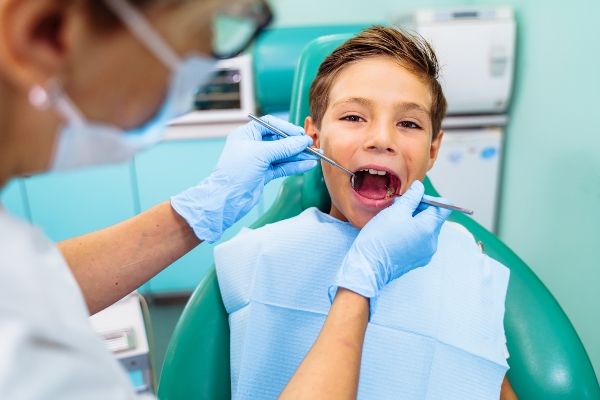 Tooth damage, whether it occurs on a baby tooth or a permanent tooth, should be taken seriously. The right
pediatric dentistry treatment can offer much-needed repairs, easing discomfort and restoring function. This is especially true when it comes to cracked teeth, which can be quite common among children.
Tooth damage, whether it occurs on a baby tooth or a permanent tooth, should be taken seriously. The right
pediatric dentistry treatment can offer much-needed repairs, easing discomfort and restoring function. This is especially true when it comes to cracked teeth, which can be quite common among children.
Many kids play sports or tend to be more active in general than adults, making it more likely for them to experience a dental injury. Chipped or cracked teeth can occur for other reasons too, like decay, chewing on foreign objects, or eating hard or tough foods. The results can be painful and unsightly, but there are many ways a pediatric dentist can restore a cracked tooth.
Treatment options for cracked teeth in children
Which approach a dentist recommends for your child will depend on a variety of factors, including:
- The child’s age
- The location of the affected tooth
- The severity and extent of the damage
- The child’s ability to tolerate dental work
Your dentist will likely discuss a variety of options to choose from, including these.
Dental bonding
Superficial or minor cracks can often be treated with dental bonding or filling the crack with a composite resin material. This results in a natural look while hiding the flaw. The process is non-invasive so it does not require drilling or sanding down large amounts of tooth enamel. However, the dentist will need to polish and smooth the final results. While your child might not enjoy the sound or the sensation, a bonding treatment is pain-free and should only lead to minor sensitivity, if any.
Veneers
Chips or deep cracks often require a bit more work. In these situations, a dental veneer may be a more appropriate solution. Veneers require the removal of the outer layer of the tooth, so the process is irreversible. However, a permanent covering is mounted to the prepared tooth, resulting in a natural-looking smile. This treatment is typically reserved for permanent teeth but may be used on baby teeth in some circumstances. Also, it is mainly used on teeth toward the front of the mouth.
Crowns
Dental crowns are quite common in pediatric dentistry. In addition to treating a tooth with severe decay, a crown can also be used to repair a cracked tooth, especially if it has resulted in the loss of part of the tooth's natural structure. Dentists often use crowns on teeth toward the back of the mouth and usually recommend metal ones in younger children, as they are more durable. However, porcelain or composite crowns may be used on permanent teeth in older children.
If the crack has reached the inner tissues of the tooth and exposed the nerves or softer tissues, a root canal may be necessary first. This will help treat and prevent infections, protecting the tooth from serious damage down the road. Once this step is complete, the dentist can move forward with placing a crown.
Conclusion
Whether big or small, painful or not, a cracked tooth should be evaluated by a pediatric dentistry professional right away. With proper treatment, the child's smile can look and function as it did before while preventing complications down the road.
Request an appointment or call Hudson Valley Pediatric Dentistry at 845-363-4177 for an appointment in our Middletown office.
Recent Posts
A child dentist can help your child achieve better dental and general health. Regular visits allow your child to get used to dental checks, tools, and equipment. Dental fear disappears, and the young patient can continue having a bright, painless smile. Here are what parents like you should look forward to during child dentist appointments.Choosing…
Cavity treatment for kids is essential for a child’s oral health. Dental decay can cause discomfort, causing the child to lose focus at school. It can even result in low self-esteem and malnutrition. Treating cavities can improve your child’s general health. Here are effective techniques for cavity treatment for kids.There are cases when fillings cannot…
Parents play a crucial role in their children's tooth care by ensuring their children get started on the right path to optimal dental health. This involves overseeing children's tooth care at home while also helping them develop healthy dental habits and ensuring they see a pediatric dentist regularly.Parents will need to keep their child's mouth…


